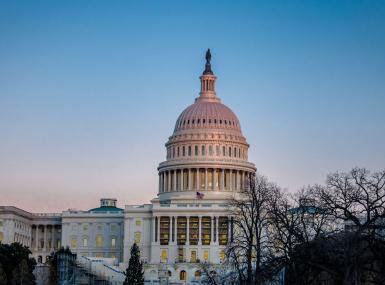Support county workers’ mental health and wellness

Key Takeaways
The success of counties relies on the dedicated staff who keep local government running smoothly. From parks and recreation to public works, county employees face many of the same health and wellness challenges as the broader workforce. This election season, many of these public servants are also now facing insults, threats, and harassment via social media and phone calls. Across the country, state and local officials are experiencing increased threats.
County election workers are particularly vulnerable to these challenges. Many current election workers have already endured the high-stakes 2020 presidential election. Alarmingly, county election workers are leaving their positions at unprecedented rates. In the Western U.S., 40% of election workers have left their jobs since 2020. As we head toward the 2024 presidential election, ensuring the safety and well-being of county election workers is more important than ever.
Broadly, employees deserve physically and mentally safe workplaces. In a climate where physical safety has evolved into threats and harassment, it is vital for leaders to show compassion and empathy and to exercise precaution as tensions may flare in the next month. A recent study revealed that 65% of U.S. workers experience a mental challenge that impacts their work. Addressing mental health at work is good for organizations’ bottom lines, with a $4 return for every $1 invested in mental health support. Employees who are happy at work are more likely to advocate for their organization and 69% less likely to look for a new job.
To support a safe and successful election season — and by extension, a healthier workforce overall — counties must prioritize the mental health and wellness of their employees, especially those in high-pressure roles like election work. Mental and behavioral health services are just one way to improve health and well-being in the workplace. Implementing practices that support mental health not only improve employee retention but also attract new talent to public service. It’s important to offer a variety of resources and tools, as there is no one-size-fits-all solution. County leaders who do so will foster a more resilient, engaged, and effective workforce. Here are a few resources for the employee groups within your organization:
- Unsure where to start? The Health Action Alliance’s Love, Your Mind Employer Guide and accompanying suite of tools helps employers use validating and empowering language to encourage mental health discussions in the workplace. Help prepare your mid-level managers and supervisors with a conversation guide to engage with their staff.
- Offer guidance to your human resource professionals. The Surgeon General’s Framework for Workplace Mental Health and Well-Being is a great tool you can share with your human resources team and managers to better understand how mental health and wellness can be integrated into the workplace.
- Election workers have specific needs. The Carter Center's resource guide for election officials provides tips for safety and security as well as recognizing stress, burnout, and trauma. This guide also offers examples of low-cost mental health resources like screening tools and support groups.
- Recognize the roles employees have outside of work. Many people in your workforce may be parents and guardians. As of 2023, 55% of parents in the U.S. are supporting children with mental health issues, an issue that has warranted an advisory from the surgeon general. Parents need support for their children and themselves. Creating employee resource groups or spaces for community can help employees know they are supported in the roles they have outside of work. Share this resource with working parents across your workforce!
- Give employees space to figure out what they need. For employees who may not want to disclose challenges, tools like self check-ins can be shared on county intranet platforms. Supplement these check-ins with resources like EAP information, your local National Alliance on Mental Illness (NAMI) chapter, or Mental Health First Aid training for your staff.
- Go beyond behavioral health. In addition to ensuring employees are aware of services available through health insurance, it is essential that employees have the flexibility to seek care within their work schedule. Messaging and time off policies that enable attending health appointments without using accrued PTO or sick time is a great way to model and encourage managers to support positive health seeking behaviors. This can be supplemented by encouraging walks during lunch hours or gym benefits to reduce stress and improve physical health. Check out these best practices for managing time-off policies.
Related News

Congress reauthorizes Economic Development Administration for first time in 20 years
The agreement reauthorizes the Economic Development Administration (EDA) for the first time in 20 years.

Counties Applaud Passage of WRDA/EDA Package
Omnibus package will advance county interests in economic development, water infrastructure
County News
Effort aims to boost leadership skills at the county staff level

